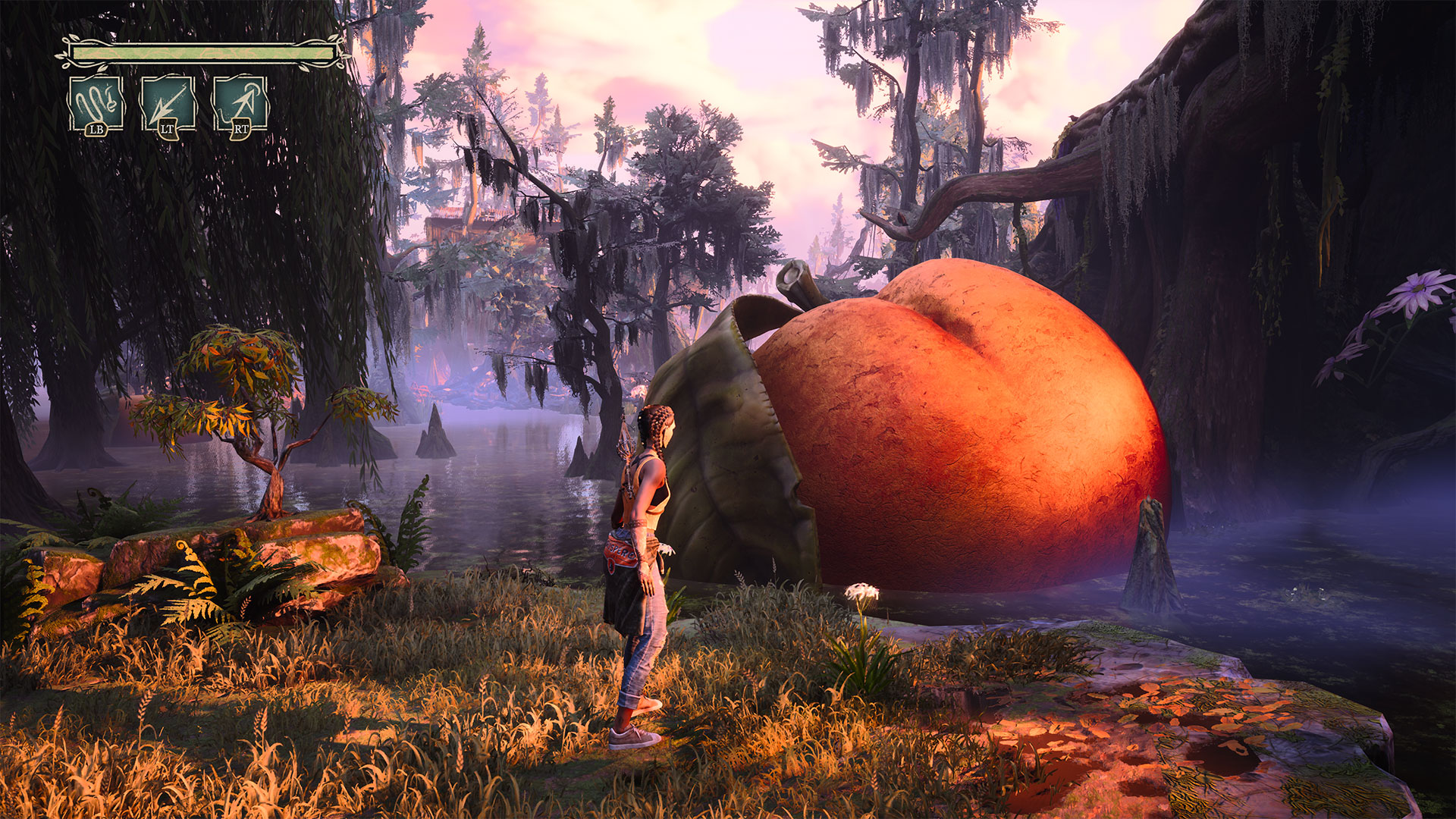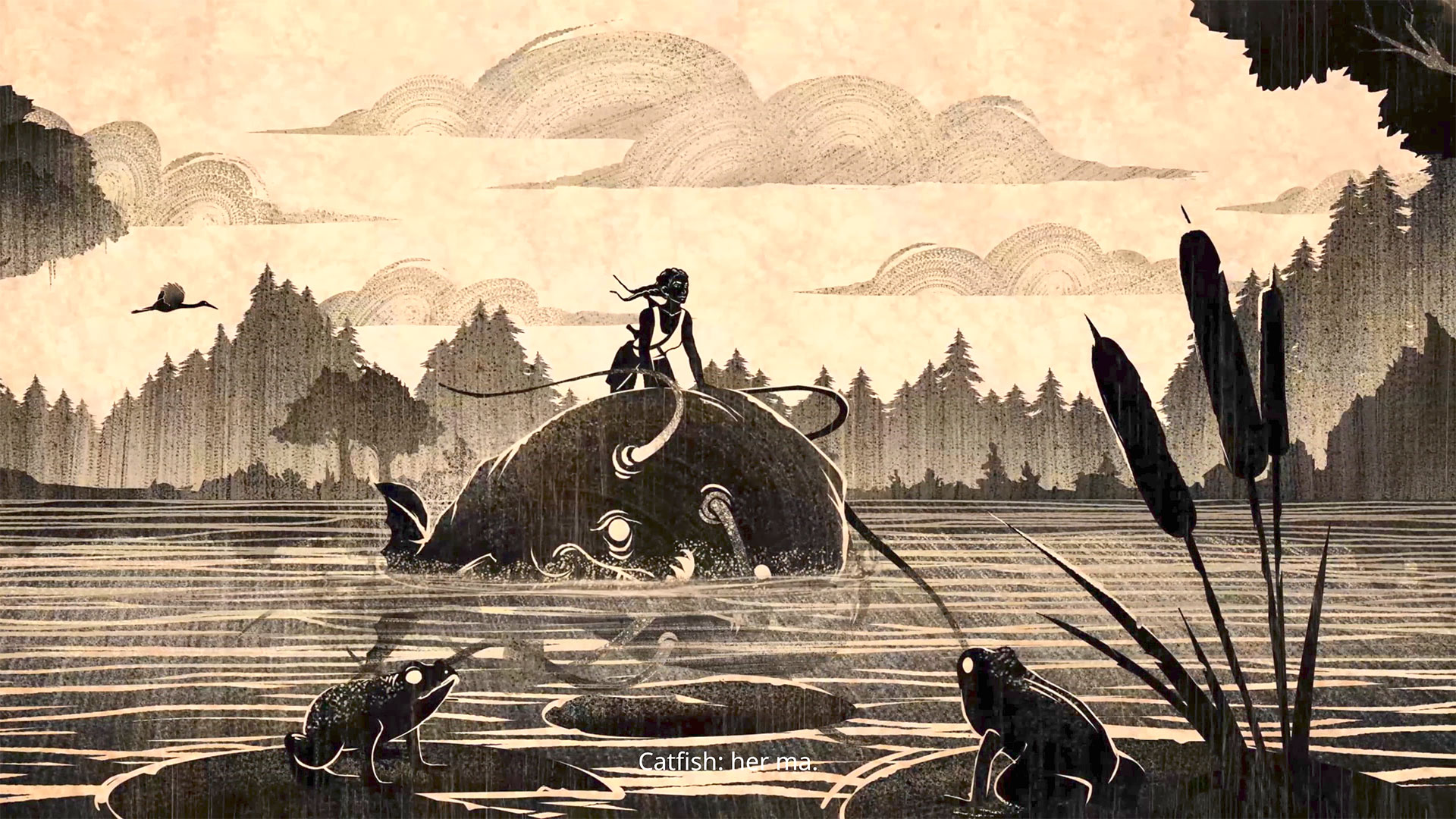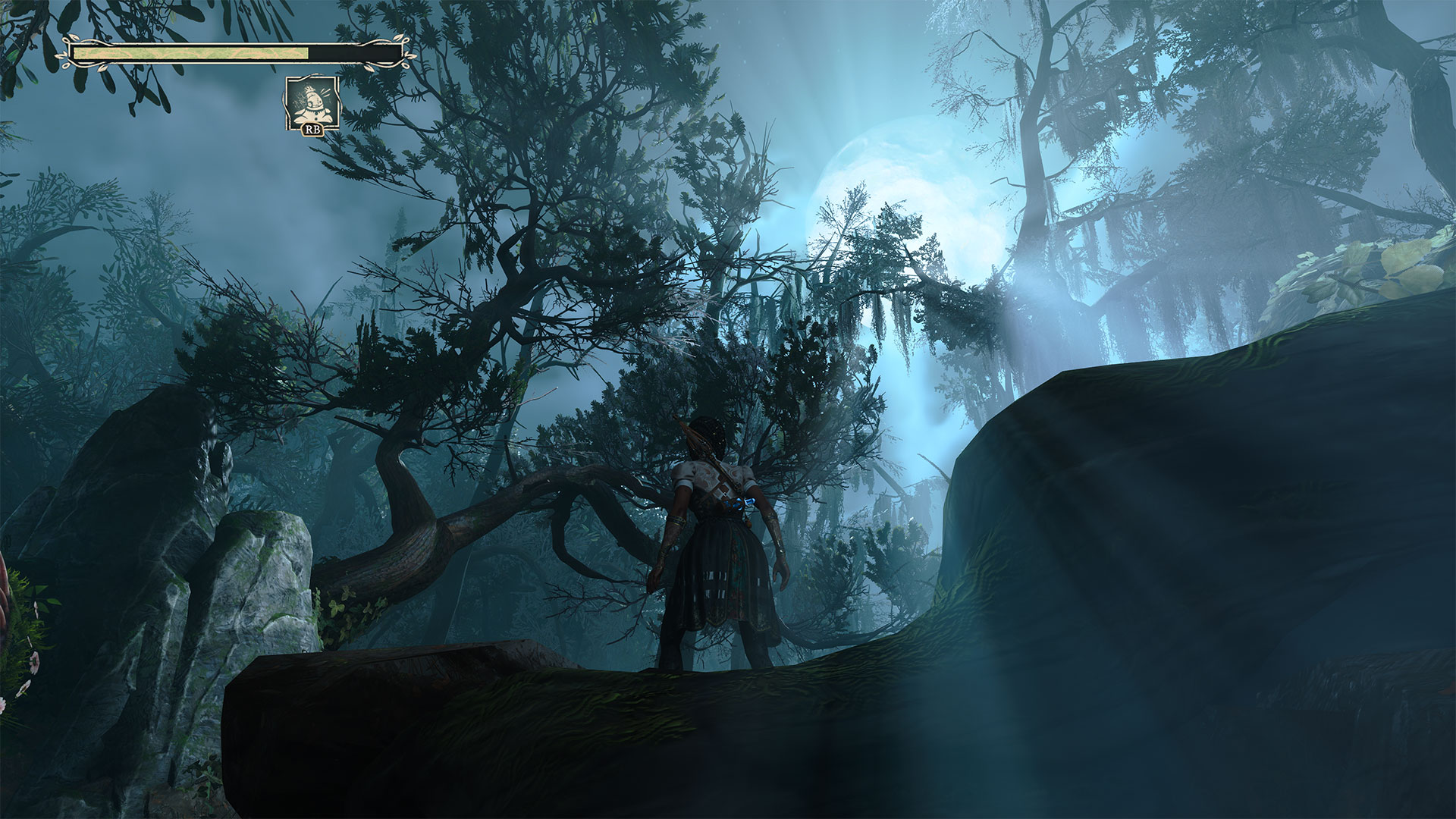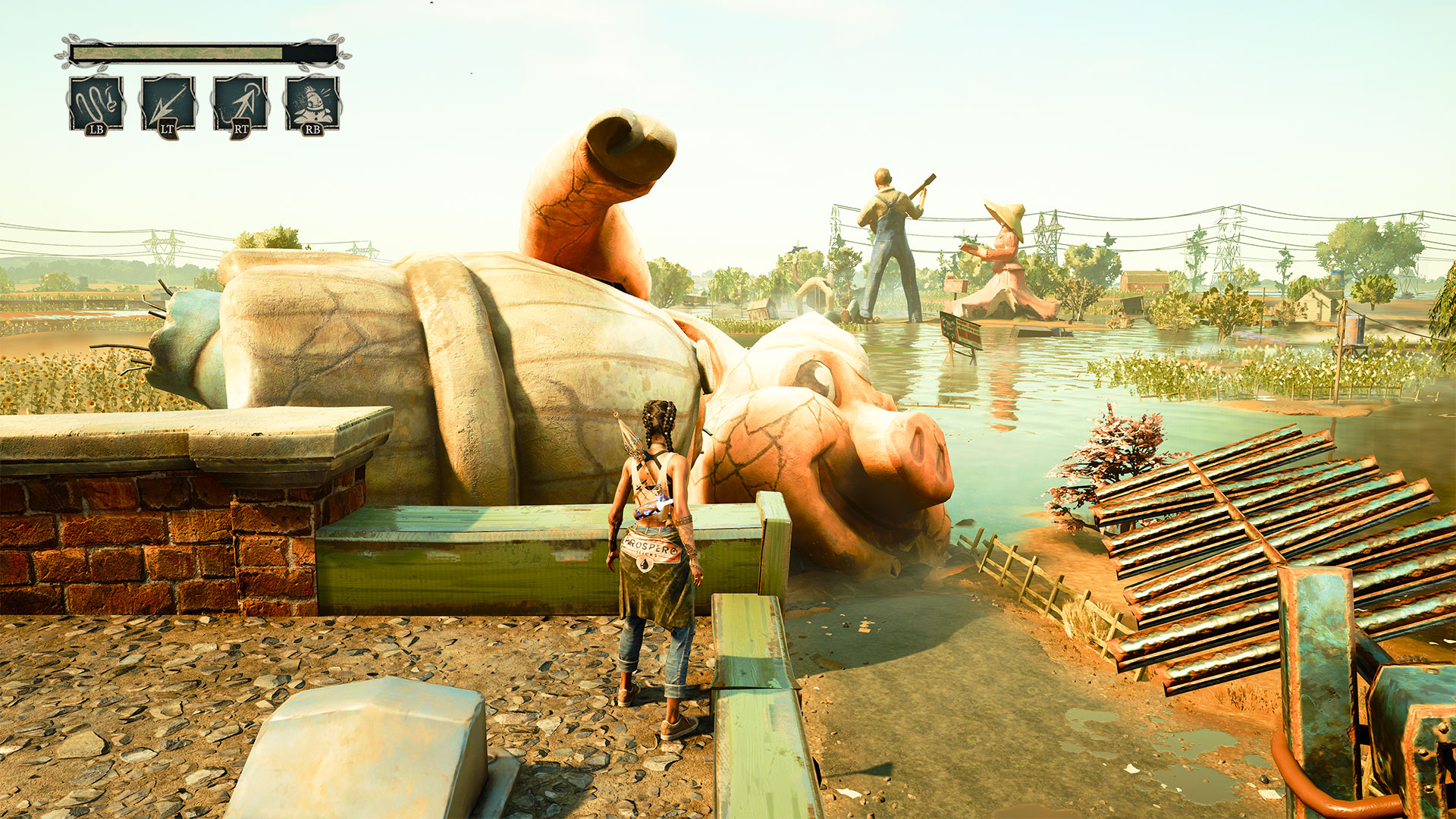Quick Verdict
South of Midnight is such a frustrating game to review because developer Compulsion Games really flirted with greatness. Unfortunately, bland combat, repetitive platforming sequences, and an uninspired upgrade system bog the experience down. From a presentation standpoint, though, South of Midnight is nearly in a class of its own, with stellar art direction and visuals. Paired with a creative soundtrack, it’s a game that’s fantastic to look at and listen to—just not to play. And that’s what makes it so frustrating.
The 10-hour experience feels like a standard action platformer. While the platforming itself is responsive and smooth, there isn’t enough variety to keep it fresh beyond one standout section towards the end of the game. The combat is equal parts frustrating and forgettable, with limited enemy types and a camera that’s among the worst this side of Kingdom Hearts. Still, I recommend South of Midnight for its charming story and characters, even if the gameplay doesn’t quite live up to the world it builds.
Southern Discomfort

South of Midnight comes from Compulsion Games, the team behind Contrast and We Happy Few. But unlike its previous titles, South of Midnight explores the mythology of America’s Deep South, a refreshing change from yet another romp through a magical island with a sword and shield. The team does a fantastic job bringing this world to life, from a talking catfish to hauntingly beautiful environments that truly reflect the tone and themes of the game.
Players step into the shoes of Hazel Flood, voiced by Adriyan Rae, as she and her widowed mother prepare for an incoming hurricane. As someone who spent 21 years living in Florida, I couldn’t help but laugh at how accurately the characters are portrayed in the opening. South of Midnight’s charm doesn’t waste any time sinking its teeth in, thanks to excellent writing and voice acting for all its characters.
Hazel’s journey begins when the storm separates her from her mother, Lacey. After a series of events, she unlocks the power of a Weaver, a magical mender of broken bonds and spirits, and sets off to find Lacey. With her new abilities, Hazel can now take on supernatural entities known as Haints and, along the way, uncovers living myths from Southern folklore. Some of these creatures lend a helping hand—or fin—as the story unfolds. While this is ultimately a tale about Hazel and her family, South of Midnight also touches on topics like racism and slavery. These themes, however, are handled with care and never overshadow the heart of the narrative.
Songs in the Weave

At its core, South of Midnight is a third-person action platformer with the occasional puzzle to solve and enemies to fight. This isn’t an open-world game; instead, each chapter has Hazel exploring a specific area of Prospero. In each zone, there’s some light exploration that usually leads to finding Floofs, the currency used to upgrade your skills. For the most part, though, it’s a fairly linear experience. Even when you stray from the main path, detours are short and mostly uneventful. In other words, exploring isn’t particularly rewarding, but it doesn’t waste your time either. For players looking to collect all the Floofs and unlock every upgrade for Hazel’s skills, the easiest method is to ignore the game’s tracker and head in another direction.
Since the entire game is about a 10 hour experience, it doesn’t take long to gain access to Hazel’s full set of combat and traversal skills. Eventually, she can double jump, wall run, zipline, and glide her way through Prospero. Major story chapters end with chase sequences that combine these elements, though none of them are especially difficult. The platforming is forgiving, so players don’t have to be very precise. It can feel a bit floaty at times, but it mostly exists to add gameplay variety as you move from point A to point B.
That said, it does start to feel bland after a while, and some of the sequences drag on or feel repetitive. It’s not the fun, satisfying kind of platforming you’d find in something like Astro Bot, but it gets the job done. Overall, the platforming feels fine—it serves its purpose—but it’s not something you’ll likely remember once the credits roll.
Spirit Strings

While the platforming in South of Midnight is competent enough, the game stumbles when it comes to combat. It’s mostly an acceptable experience, but it can be incredibly frustrating due to how limited everything feels. Hazel gets access to a total of five skills, each with its own cooldown and upgrade path, but the lack of enemy variety makes the whole experience taste like unsalted grits. Every combat sequence takes place in a small arena and usually involves a couple waves of Haints. I never felt connected to the game’s combat, and even once I got the hang of it, it never felt satisfying.
Personally, I found the camera frustrating to deal with, especially when enemies were outside your field of view and suddenly lunging in from off-screen. There are indicators to warn you, but they’re easy to miss when you’re already trying to manage cooldowns and movement. Since all encounters play out in enclosed spaces and against the same few enemy types, the combat gets stale quickly. Even worse, most of the game’s boss fights are forgettable, and a couple are somehow easier than the random Haints you fight along the way.
Hazel also encounters puzzles throughout her journey, a few of which require help from Crouton, her adorable stuffed companion brought to life. Like the combat and platforming, these puzzles don’t offer much challenge or creativity. Most involve moving an object so Hazel can reach a new area. A few sections are only accessible to Crouton, functioning more like traversal puzzles where you guide it to a goal without taking too much damage. These mechanics help make South of Midnight feel more like a game than a walking simulator, but they’re not the main reason to play.
Spool’s Gold

Where South of Midnight lacks in compelling gameplay elements, it makes up for tenfold in production. The game is filled with beautiful, detailed environments that feel full of life. Even the more desaturated areas are a sight to behold. Transitions between chapters play out like a storybook, with animated illustrations serving as a stylish segue into the next level. I also have to praise the lighting, which does a great job setting the mood and reflecting what Hazel is going through from one level to the next. As for performance, I didn’t run into any notable issues on the Xbox Series X, though it did take a little time to adjust to the game’s stop-motion animation style.
Along with the stellar art direction, South of Midnight’s soundtrack couldn’t be more fitting. I especially loved what the team did for each boss, giving them unique themes that felt tailored to their character. The entire soundtrack draws heavily from the musical traditions of the Deep South—blues, jazz, soul, country, and a bit of rock ‘n’ roll. It’s all masterfully composed by Olivier Derivière, and some of the best songs feature standout sound mixing and evocative lyrics.
In many ways, it feels like most of South of Midnight’s limited budget went into audio and visuals rather than systems and design. The team is clearly talented since the game runs smoothly and I didn’t encounter any major bugs, but the overall experience lacks the creativity you’d find in a game like Split Fiction. It’s a shame, really, because South of Midnight could have been one of the best games of the year had the platforming and combat sequences been more engaging. Funny enough, you can actually skip combat altogether, including boss fights, as well as the platforming chase sequences. In a sense, the game seems to know which parts folks might want to skip, and if this is intentional, I respect the self-awareness. It’s also worth mentioning that South of Midnight includes a wide range of difficulty settings and accessibility options, so you can tailor the experience to your liking.
Said and Done

Throughout my time with South of Midnight, I kept being reminded of Kena: Bridge of Spirits. Released in 2021, Ember Lab’s debut game features a very similar gameplay loop. Both titles punch above their weight when it comes to presentation and visuals. While Kena: Bridge of Spirits was stronger in terms of combat and boss fights, South of Midnight is leagues better when it comes to characters and voice acting. The comparison feels natural and if you enjoyed Kena: Bridge of Spirits, there’s a good chance you’ll enjoy South of Midnight too. Even the pricing is identical, with both launching at $39.99.
While South of Midnight’s gameplay is fairly standard and a bit bland, its world and characters help deliver a memorable experience. The story has its moments, but it’s really the personalities in Prospero that kept me engaged all the way through. It’s not a game I’m eager to return to for 100-percent completion, nor is it something I see myself revisiting years down the road. But I don’t regret the time I spent with it, and I hope Compulsion Games gets the budget it needs to deliver a more complete vision next time. The team has already proven it can build visually stunning and emotionally resonant worlds—now it just needs to find that secret recipe for gameplay with more kick, more spice, and a whole lot more soul.
South of Midnight releases on April 8, 2025 for Xbox Series X|S and PC. This review is based on a copy of the game provided as part of Game Pass on Xbox Series X. While FullCleared does have affiliate partnerships, they do not influence our editorial content. We may, however, earn commissions for products purchased via affiliate links.





















